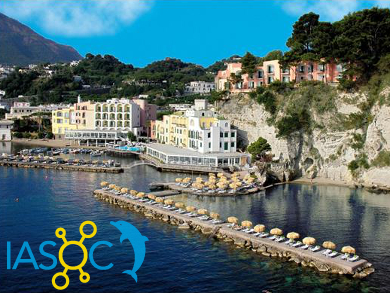The Ischia Advanced School of Organic Chemistry (IASOC) takes place every second year on the small island of Ischia, in the gulf of Naples. This advanced organic chemistry school is renowned not only for its gorgeous location, but also for the outstanding quality of the speakers and the informal atmosphere, which fosters contacts and discussion between the participants. More than 120 participants from over 20 countries all around the globe took part in this year’s edition of the school, organized by the University of Naples Federico II, Department of Chemical Sciences, under the aegis of the Italian Chemical Society (Società Chimica Italiana, SCI) and of the European Association for Chemical and Molecular Sciences (EuCheMS).
Taking place from the 21st to the 25th of September 2014, the school started on a beautiful Sunday evening, when the participants gathered at the terrace of the Regina Isabella hotel to enjoy the breathtaking view of the Mediterranean and the coast of the picturesque island while refreshing from their trips with foods and drinks. The four-day scientific program started the next day, and more than lived up to the high expectations, again confirming the impressive standards this conference series is known for.
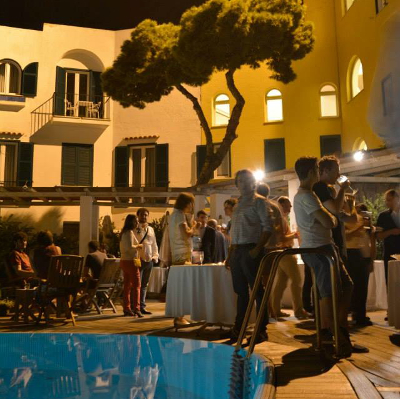 |
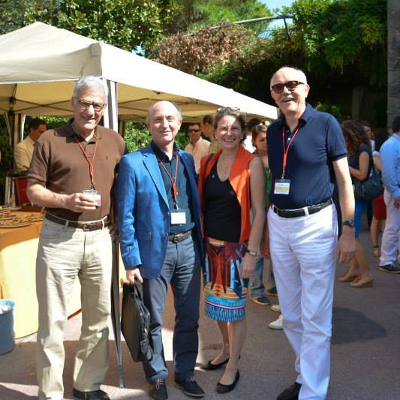 |
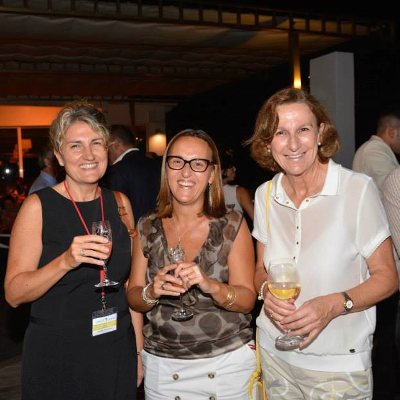 |
||
|
Welcome cocktail by the swimming pool. |
From left to right: S. Hanessian, M. d’Ischia, E. Wille and P. Goelitz. |
S. Pedatella (IASOC secretary, in the middle) with C. Nativi and M. Amat. |
This year’s edition, which celebrated thirty years since the school’s foundation in 1984, had the honor of hosting Nobel Prize laureate Professor Ei-ichi Negishi from Purdue University, West Lafayette, IN, USA, who gave a fascinating opening lecture. Starting with the challenges in organic synthesis, he set out to tackle at the beginning of his career, leading him to revolutionize the field of organic synthesis, and ultimately resulting into him being awarded the Nobel Prize in 2010. More recent developments in asymmetric synthesis from his laboratory followed.
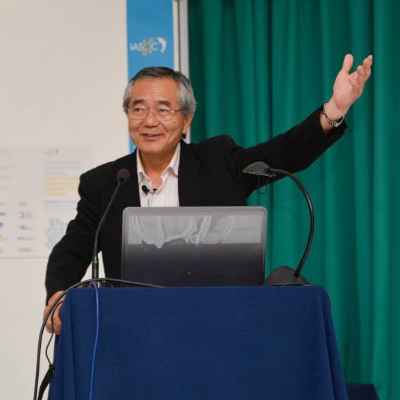 |
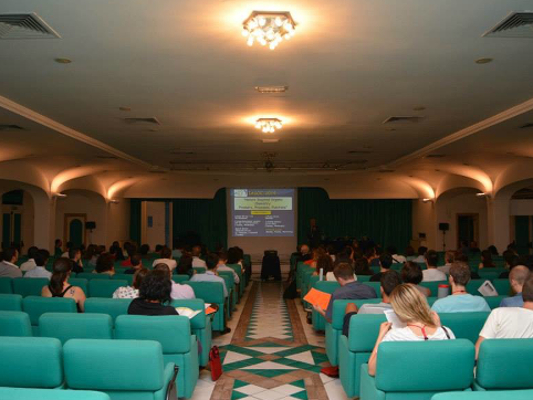 |
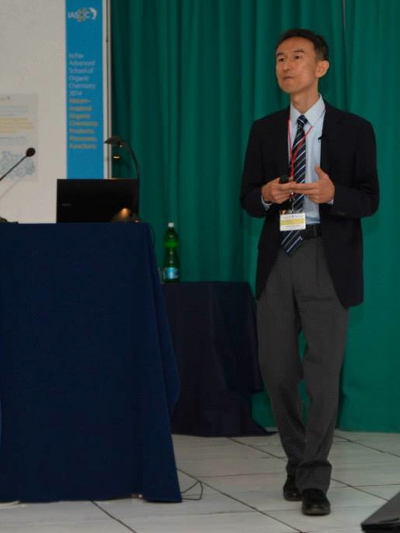 |
||
|
Professor Negishi fascinating the audience during his opening lecture. |
Listening to good chemistry. |
Professor T. Ooi illustrating his chemistry. |
In this edition of the school, a novelty was introduced in the form of two tutorial sessions. Intended to present selected topics in a didactic way, and to stimulate open discussion between the lecturer and the participants, two hot topics in current organic synthesis were presented by some of the most eminent scientists of the field: “Metal catalyzed synthetic transformations” by Professor Justin Du Bois, University of Stanford, CA, USA, and, on the other side of the “catalytic medal”, “Metal-free catalyzed asymmetric transformations” by Professor Yujiro Hayashi, Tohoku University, Sendai, Japan.
Professor Du Bois illustrated how carbene- and nitrene-like reactivity can be achieved by combining dirhodium tetracarboxylate catalysts with diazo and sulphonamide substrates, with special emphasis on the challenges researchers have faced in taming the reactivity of diazoacetates.
Professor Hayashi gave the audience an overview of asymmetric organocatalysis, starting from the late 1990s, when this topic consisted of only a few examples, to its astonishing heyday during the first decade of this century. He finished with some remarkable achievements from his laboratory, ranging from a very general catalytic system to the development of multi-step one-pot processes. The lecture was dedicated to the memory of Professor Carlos F. Barbas III, one of the pioneers of the field, who passed away prematurely earlier this year.
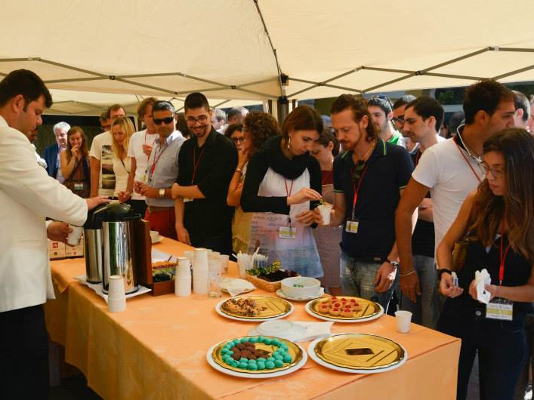 |
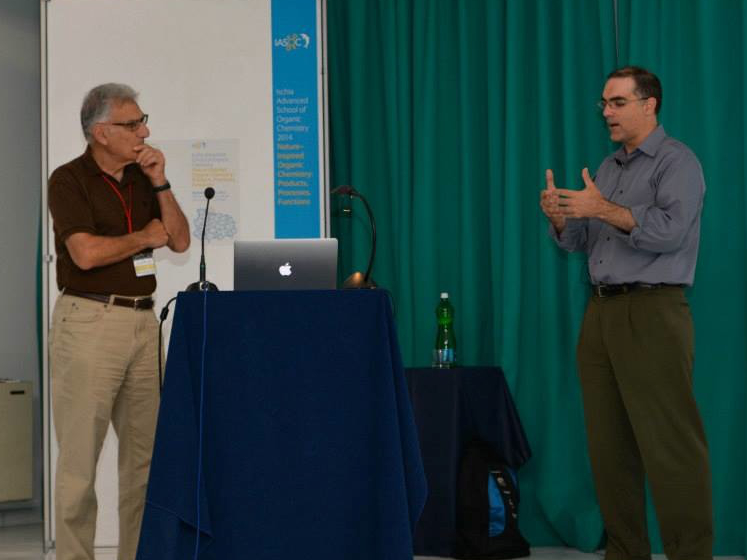 |
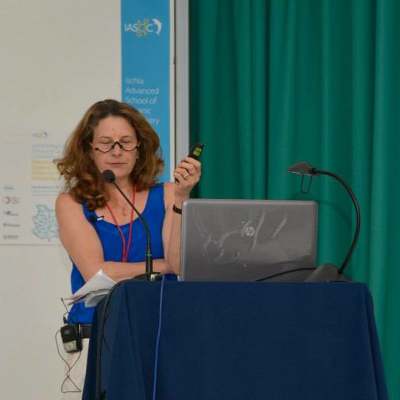 |
||
|
At the coffee break. |
Professors S. Hanessian and J. DuBois at the tutorial. |
Dr. Eva E. Wille illustrating ChemPubSoc Europe. |
Yet another type of tutorial session, which raised great interest in the participants, dealt with “The secret of scientific publishing: Angewandte Chemie and the ChemPubSoc Europe journals as an example”. In this session Dr. Peter Gölitz (Editor of Angewandte Chemie) presented the strategy followed by Angewandte Chemie to maintain the standards which make it one of the most prestigious chemistry journals. His talk highlighted rejection rates, the importance of motivated referees, and the constant need for innovation in scientific publishing.
This was followed by a talk about ChemPubSoc Europe – an organization comprising 16 European chemical societies – by Dr. Eva E. Wille (VP Global Chemistry, Wiley-VCH). The societies amalgamated 16 traditional national chemical journals, a process that took just over a decade and has lead to fewer journals with excellent quality and global relevance. Dr. Wille showed how import constant communication is for the continuing success of joint European publishing.
The closing lecture was given by Professor Stephen Hanessian, University of Montréal, QC, Canada, one of the pillars of the organization of the school through the years (he only missed one edition in thirty years!), who engaged the young audience with a fascinating journey through the many achievements of his long and successful career.
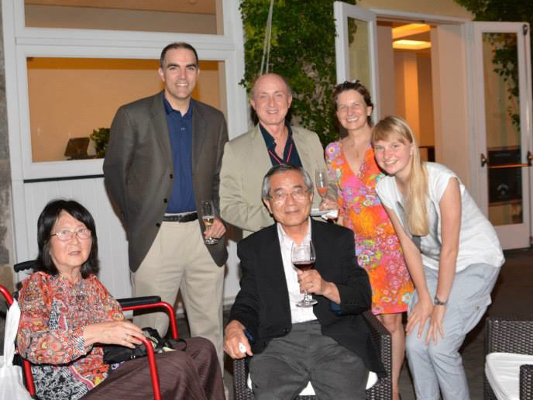 |
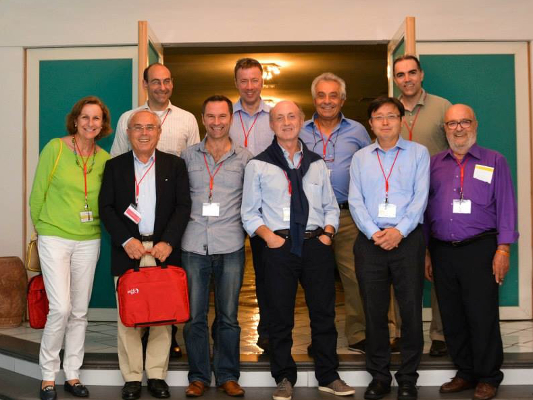 |
|
|
Wine tasting with Professor Negishi and his wife at the welcome party. |
After a session, upper and lower, from left to right: C. Lerner, A. Wilson, C. Trombini, J. DuBois, M. Amat, S. Florio, D. Dixon, M. d’Ischia, Y. Hayashi, and R. Caputo (IASOC founder). |
The school ended with a dinner at the Regina Isabella hotel, where the participants celebrated a week of fruitful learning, discussion and enjoyment. Perhaps the best summary of the conference was given by Professor Ei-ichi Negishi: “A superb combination of natural beauty and top-level organic chemical discussions! Unquestionably, one of the few best meetings in which I have participated over the past half-a-century. I am hopeful that the Ischia conference will continue and further grow.” The next edition of the Ischia Advanced School of Organic Chemistry will entice and inspire a new generation of young scientists on September 18–22, 2016.
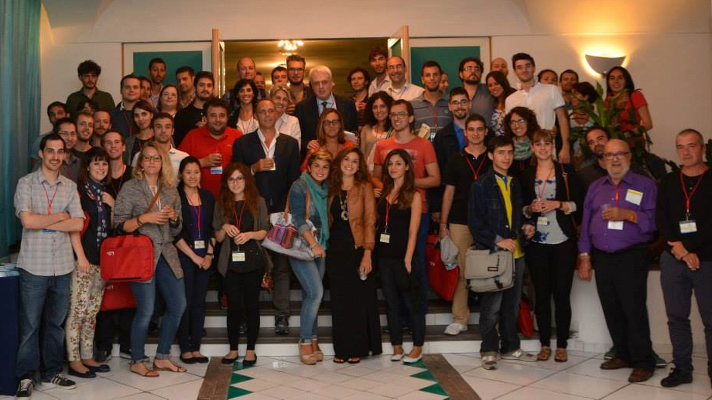 |
|
Group photo at the conference venue. |
- Ischia Advanced School of Organic Chemistry (IASOC 2014)
- Ischia Advanced School of Organic Chemistry (IASOC 2016)
